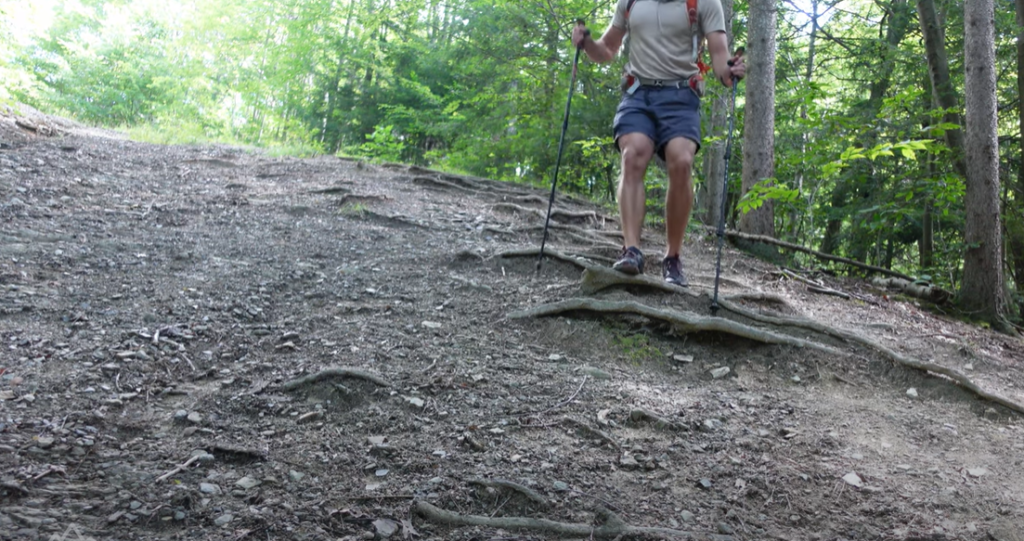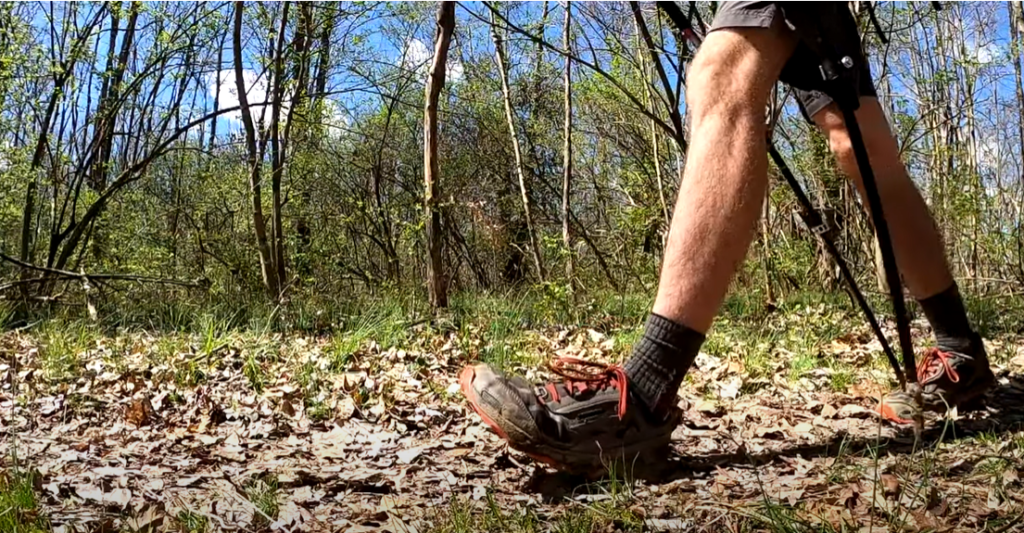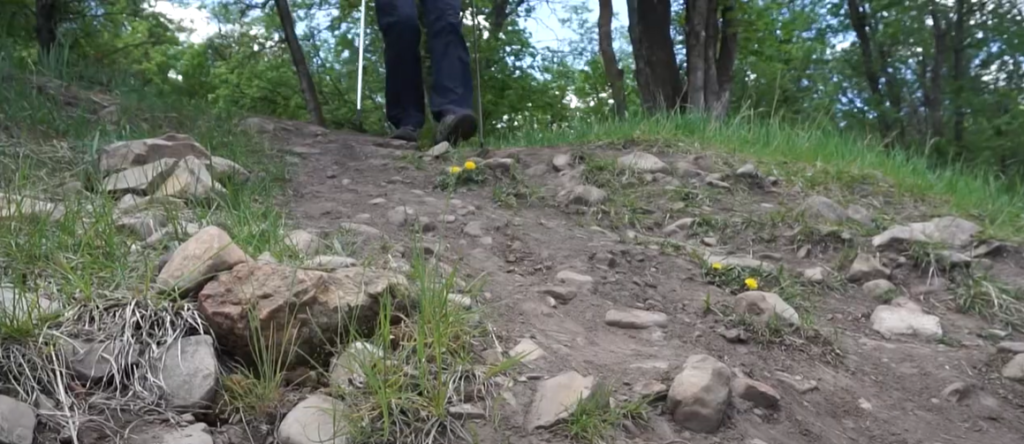If you’re planning on going on a hike or trekking through the mountains, you’ll want to bring your trekking poles. But can you bring them on a plane? In this blog post, we’ll answer that question and tell you everything you need to know about flying with trekking poles.
What Are Trekking Poles?
Trekking poles are long, lightweight poles that are used by hikers and trekkers for added stability and support while walking. They typically have adjustable straps that allow them to be easily carried when not in use. [1]
Can You Bring Trekking Poles on a Plane?
Yes, you can bring trekking poles on a plane as long as they comply with the airline’s carry-on luggage size restrictions. Typically, this means that the poles must be less than 42 inches (106 cm) in length when fully extended. Most trekking poles collapse down to a much smaller size, making them easy to pack in your carry-on bag.
However, it’s always a good idea to check with your airline before packing any type of sport equipment in your carry-on luggage. Some airlines may have specific restrictions or require that the poles be placed in a checked bag. [2]

Speak with the TSA officials at your local airport
The best way to find out for sure is to speak with a TSA official at your local airport. They will be able to tell you if there are any restrictions on bringing trekking poles in your carry-on luggage.
Take your poles apart before putting them in your backpack
If you’re worried about the TSA officials not being able to tell that your poles are, in fact, trekking poles, you can always take them apart and put them in your backpack. This will help to make things go more smoothly and avoid any potential problems.
Mail Them
If you’re still not sure, another option is to simply mail your trekking poles to your destination ahead of time. This way, you won’t have to worry about packing them in your carry-on luggage or dealing with any potential problems at the airport.
Look for New Options When You Arrive.
If you’re really worried about bringing your trekking poles on a plane, there’s always the option of simply buying new ones when you arrive at your destination. This may not be the ideal solution, but it’s definitely an option if you’re really not comfortable bringing your poles on a plane.
Tricks When Traveling with Trekking Poles
Trekking poles are an essential piece of gear for avid hikers and backpackers. They provide added stability on rough terrain, help reduce fatigue on long hikes, and can even be used in emergencies to help create a shelter or signal for help. But when it comes to travel, trekking poles can pose a bit of a quandary – can you bring them on a plane?
The simple answer is yes, you can bring trekking poles on a plane as long as they adhere to the size and weight restrictions set by the airline. However, there are a few things to keep in mind when packing your trekking poles for air travel. Here are a few tricks to make traveling with trekking poles a breeze:
- Pack your trekking poles in your carry-on bag: This will help ensure that your poles don’t get lost or damaged in transit.
- Check the size and weight restrictions for your particular airline: Each airline has different restrictions when it comes to size and weight, so be sure to check before you pack.
- Consider investing in a travel case for your trekking poles: This will help protect your poles and make packing them easier.
With these tips in mind, you’ll be able to easily bring your trekking poles on a plane without any hassle. So go ahead and hit the trail – your poles are ready to come along for the ride!

Which Trekking Poles Should I Pack?
There are a lot of different trekking poles on the market, and it can be tough to decide which ones to bring on your next trip. When deciding which poles to pack, consider the following:
- The weight of the poles: Heavier trekking poles can be more difficult to carry on a long hike, so if you’re planning on doing a lot of walking, choose lighter poles.
- The type of terrain you’ll be hiking in: If you’re planning on hiking through rocky or root-filled trails, look for poles with spikes or tips that can help you navigate those areas.
- How much support you need: Some trekking poles have additional features like wrist straps or handles that can provide extra support for your arms and hands. If you have any joint issues or other medical conditions that might benefit from additional support, choose poles with these features.
Things to Avoid When Traveling with Trekking Poles
When planning to bring your trekking poles on a plane, there are a few things you’ll want to avoid. First, make sure the tips of your poles are well protected. If they’re not, they could puncture the inflatable life rafts on board the plane.
Second, avoid packing your trekking poles in a hard-sided suitcase or container. The pressure inside the cabin can cause the poles to snap.
If you follow these simple tips, you’ll be able to bring your trekking poles on a plane without any problems. [3]
Things to Consider When Choosing Trekking Poles
When deciding if you should bring your trekking poles on a plane there are a few things you should consider. First, how much extra weight and bulk do the poles add to your luggage? Second, how sturdy are the poles and are they likely to survive being jostled around in baggage claim? Third, will the airline allow you to bring the poles on board as a carry-on item or will you have to check them?
Most trekking poles collapse down to a manageable size, so they shouldn’t add too much bulk to your luggage. And as long as they are made of durable materials, they should be able to withstand being jostled around in baggage claim. However, not all airlines allow trekking poles as a carry-on item, so you may have to check them. Be sure to check with your airline before packing your poles to avoid any problems at the airport.
When to Use Trekking Poles?
Trekking poles are most commonly used when hiking on difficult terrain. They can provide support and stability when climbing or descending steep hills and can help reduce the impact on your knees. Trekking poles can also be used to help crossing streams or other obstacles. [4]
How to Use Trekking Poles?
It is best to use your trekking poles in pairs, even if you’re only carrying one. This will give you more balance and stability on uneven terrain. If you’re using your poles for hiking, place them so that they are level with your hip bones. For uphill sections, move the poles ahead of you and plant them firmly into the ground. For downhill sections, place the poles behind you.
When it comes to using trekking poles, there are a few things to keep in mind. First, always use them in pairs – even if you’re only carrying one! This will give you more balance and stability on uneven terrain. Second, when hiking, place the poles so that they are level with your hip bones. For uphill sections, move the poles ahead of you and plant them firmly into the ground. For downhill sections, place the poles behind you.
By following these simple tips, you’ll be sure to get the most out of your trekking poles – and have a more enjoyable hike! [5]

Benefits and Cons of Trekking Poles
When deciding whether or not to bring your trekking poles on a plane, there are a few things to consider. The first is the benefits of having them with you. Trekking poles can provide much-needed support and stability when walking on uneven terrain or for long periods of time. They can also help reduce fatigue and improve your balance.
When deciding whether or not to bring your trekking poles on a plane, weigh the pros and cons carefully.
FAQ
Do trekking poles really make a difference?
Trekking poles are an essential piece of gear for many hikers and backpackers. And while they may seem like a bit of a luxury, they can actually make a big difference on the trail, helping you maintain balance, keep your pace, and relieve stress on your joints.
What is the difference between hiking and trekking poles?
Hiking poles and trekking poles are essentially the same thing, just with different terminology. In general, “hiking poles” are used in the US while “trekking poles” are used elsewhere.
How do I choose the right hiking or trekking poles?
There are a few things to consider when choosing hiking or trekking poles:
- Material: Hiking and trekking poles are typically made from aluminum, carbon fiber, or a composite of both materials. Aluminum is the most affordable option, but it is also the heaviest. Carbon fiber is lighter and more expensive. Composite materials offer a balance of weight and price.
- Length: Hiking and trekking poles come in a variety of lengths. It is important to choose a pole that is the right length for you. To do this, stand up straight with your arms at your sides and have someone measure from the ground to the crease in your elbow. This is the ideal length for your hiking or trekking poles.
- Grip: Hiking and trekking poles typically have handles made from cork, foam, or plastic. Cork is the most comfortable material, but it is also the most expensive. Foam is a good middle-of-the-road option, while plastic is the most affordable.
- Tip: The tip of your hiking or trekking pole should be made from carbide, steel, or tungsten. Carbide is the most durable option, but it is also the most expensive. Steel is a good middle-of-the-road option, while tungsten is the most affordable.
Can I bring my hiking or trekking poles on a plane?
Yes, you can bring your hiking or trekking poles on a plane. However, you will need to pack them in your checked luggage. This is because the tips of hiking and trekking poles are made from metal, which is not allowed in carry-on luggage. When packing your hiking or trekking poles for a flight, be sure to pad them well to avoid damage. You may also want to consider disassembling your poles to make them easier to pack.
Is it good to walk with trekking poles?
Walking with trekking poles can actually be very beneficial. Trekking poles can help you maintain your balance, keep your pace, and relieve stress on your joints. They can also be used to help you navigate difficult terrain. If you’re new to using trekking poles, start by using them on easy trails and gradually work your way up to more challenging terrain.

Do I need to buy special shoes for walking with trekking poles?
No, you do not need to buy special shoes for walking with trekking poles. However, it is important to make sure that your shoes are comfortable and provide good support. You may also want to consider investing in a pair of hiking or trekking socks, which can help reduce friction and prevent blisters.
How do I store my trekking poles when I’m not using them?
When you’re not using your trekking poles, you can store them in your backpack or in a storage bag. If you’re planning on storing your trekking poles for an extended period of time, it is important to clean and dry them before doing so. This will help prevent corrosion and damage.
Do hiking poles build muscle?
Yes, hiking poles can actually help build muscle. This is because they provide resistance as you walk, which helps to tone and strengthen your muscles. Hiking poles can also help improve your posture and increase your range of motion.
How to clean trekking poles?
Trekking poles are great for helping with balance and stability on uneven terrain, but they can be difficult to clean if they get muddy or wet. Here are some tips on how to clean your trekking poles so that they will be ready for your next adventure.
- Rinse off the dirt and mud with water.
- Use a mild soap or detergent to remove any remaining dirt or grime.
- Dry the trekking poles completely before storing them away.
- If the trekking poles have adjustable sections, make sure to tighten all the bolts before storing them away.
Following these tips will help ensure that your trekking poles are clean and ready for your next hike.
Useful Video: Trekking Poles on the Plane
Conclusion
So, can you bring trekking poles on a plane? The answer is yes, but there are some things to keep in mind. First, make sure that your trekking poles are TSA-compliant. Second, be prepared to pack them properly for travel. And finally, be aware of the airline’s policies regarding carry-on and checked baggage. By following these simple tips, you’ll be able to bring your trekking poles with you on your next flight with no problems.
Hopefully, this article was helpful. Share it with your friends and do not miss our next blog posts!
Thanks for reading!
References:
- https://www.rei.com/learn/expert-advice/trekking-poles-hiking-staffs.html
- https://ryderwalker.com/blog/how-to-carry-trekking-poles-on-plane/
- https://worldexpeditions.com/blog/3-gear-mistakes-to-avoid-when-going-on-a-trek
- https://kuluarpohod.com/en/articles/snaryaga-v-pohod/how-to-choose-trekking-poles/
- https://www.verywellfit.com/how-to-use-hiking-and-trekking-poles-for-stability-4145313










Leave a Review